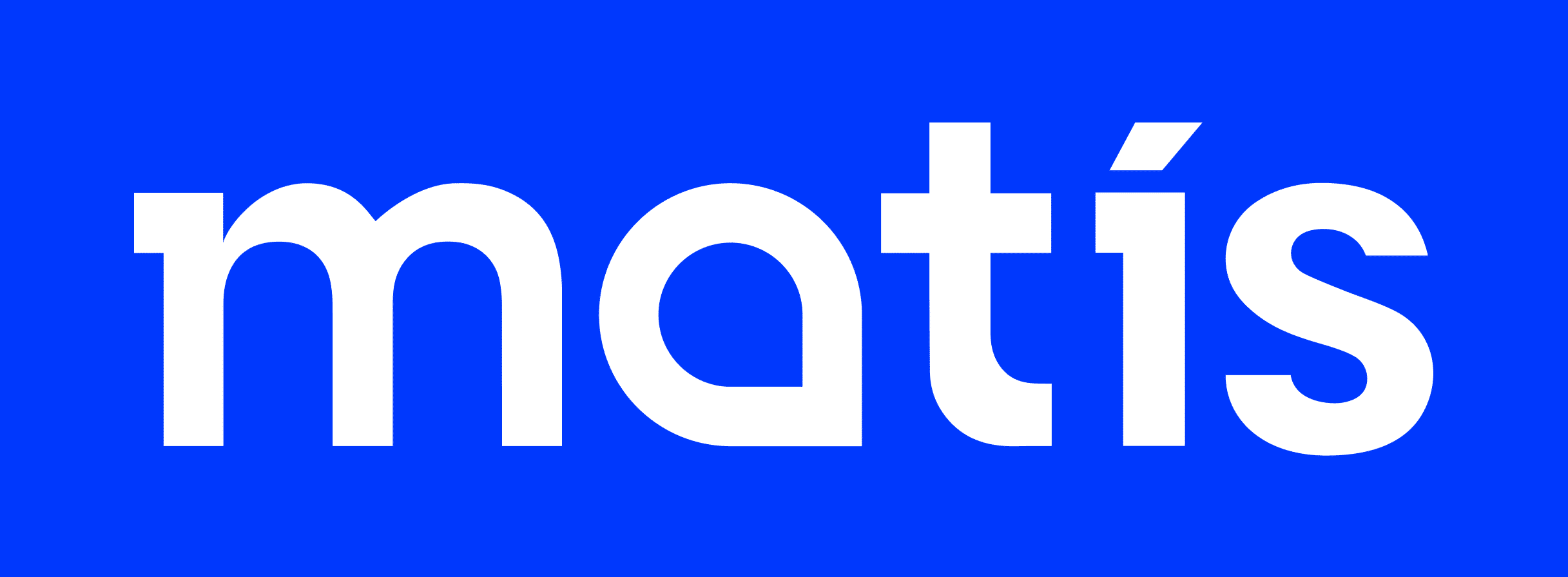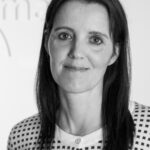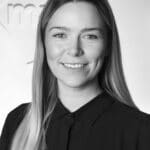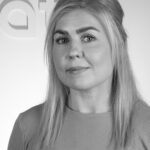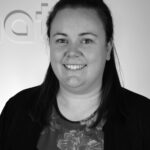Þessi skýrsla er lokuð / This report is closed.
Hrognkelsi eru í dag að mestu nýtt vegna hrogna eða sem hreinsifiskar í laxeldi (hrognkelsisseiði), en stór hluti hráefnisins er lítt eða ekki nýttur. Markmið verkefnisins var að kanna möguleika á framleiðslu gelatíns og kollagens úr hrognkelsum, bæði úr villtum fiski og hrognkelsum sem falla til við fiskeldi. Verkefnið beindist að því að þróa aðferðir sem stuðla að aukinni verðmætasköpun úr þessari tegund með framleiðslu hágæða lífefna, einkum kollagens, sem hefur fjölbreytt notagildi í matvælum, fæðubótarefnum, snyrtivörum og líftækni.
Verkefnið var samvinnuverkefni Matís, Hafrannsóknastofnunar (Hafró), Háskóla Íslands (HÍ), Marine Collagen og Arctic Fish, og var styrkt af Matvælasjóði.
Niðurstöður verkefnisins stuðla að aukinni nýtingu sjávarauðlinda og leggja grunn að þróun sjálfbærari og umhverfisvænni framleiðslu á verðmætum lífefnum úr hliðarstraumum fiskeldis og sjávarútvegs.
_____
Lumpfish are currently utilized mainly for their roe or as cleaner fish in salmon aquaculture (juveniles), while a significant proportion of the biomass remains underutilized. The objective of the project was to investigate the potential for producing gelatin and collagen from lumpfish, both from wild-caught fish and from aquaculture by-products. The project focused on developing methods to enhance value creation from this species through the production of high-quality bio-based compounds, particularly collagen, which has versatile applications in food, dietary supplements, cosmetics, and biotechnology. The project was a collaborative effort between Matís, the Marine and Freshwater Research Institute (MFRI), the University of Iceland (UI), Marine Collagen, and Arctic Fish, and was funded by the Icelandic Food Fund.
The outcomes of the project contribute to improved utilization of marine resources and provide a foundation for developing sustainable and environmentally friendly production of valuable bio-based compounds from aquaculture and fisheries side streams.
Höfundur: Kristín Edda Gylfadóttir
Ein af framtíðarsýnum í norrænu samstarfi er að Norðurlöndin verði sjálfbærasta svæði heims árið 2030 og þarf að kannaða allar leiðir til að auka sjálfbærni innan bláa hagkerfisins. Að borða fæðutegundir af lægri stigum fæðukeðjunnar getur hjálpað til við að draga úr kolefnisfótspori matvælaframleiðslu og jafnvel hjálpað til við varðveislu vistkerfa. Þetta þýðir að samhliða því að fæða jarðarbúa, erum við einnig að leggja fram jákvætt framlag í baráttunni gegn loftslagsbreytingum og hamla tapi á líffræðilegum fjölbreytileika, sem á endanum stuðlar að bættri heilsu sjávar. Fæðutegundir af lægri stigum hafa lítil umhverfisáhrif og geta jafnvel veitt umhverfislegan ávinning, dæmi um slíkar tegundir eru ýmsar þangtegundir, skelfiskur eins og kælingar og ostrur, beitartegundir eins og ígulker og sæbjúgu, svo og sumar tegundir ferskvatnsfiska. Þessar tegundir hafa yfirleitt mun lægra kolefnisfótspor en önnur matvælaframleiðslukerfi og aðrar matvælategundir. Í þessari skýrslu er ætlunin að kortleggja hvað er verið að rækta og veiða af þessum tegundum á Norðurlöndunum.
_____
The current vision for continued Nordic cooperation is that the “Nordic region will be the world’s most sustainable and integrated region by 2030”, where every avenue of sustainability within the blue sector must be explored. One alternative is to expand the production of familiar and novel food, particularly the marine production of Low Trophic Species (LTS) such as macroalgae (seaweeds), filter-feeding shellfish (e.g. mussels and oysters), grazers such as sea urchins and sea cucumbers, as well as some species of freshwater finfish. Therefore, there have been several reports recently, like “Food from the Oceans” pointing out the importance of LTS, notably herbivore filter feeders as a part of the solution for direct human consumption or, together with cultivated macroalgae, and a more ecologically efficient source of feed for the farmed marine carnivores (e.g. finfish, shrimp, etc,). Accordingly, eating LTS can help reduce the carbon footprint of food production as LTS can provide food with a smaller carbon footprint than other land-based meat production systems, and can also preserve ecosystems. This means that whilst feeding the population, we are also making a positive contribution to the fight against climate change and biodiversity loss, ultimately contributing to improved ocean health. The aim of this report is to analyse the current status of low trophic aquaculture and fisheries/harvesting in the Nordic countries.
Skoða skýrslu
The dietary inclusion of spray‑dried plasma proteins has been shown to improve animal performance in terrestrial livestock under challenging conditions, but evidence in fish is inconsistent. This 87‑day trial evaluated the effect of 5% Proglobulin®, a spray‑dried porcine plasma protein, in the diet of juvenile Atlantic salmon (Salmo salar) during seawater transfer. Fish (initial weight 53.8 ± 5.9 g) were stocked at 29 fish per 200-L tank (six replicate tanks per diet) in a recirculating aquaculture system. The trial comprised a 17‑day freshwater phase followed by a 70‑day seawater phase (salinity 31.8 ppt). Control and test diets were formulated to similar crude protein (52%) and lipid (19%) levels. Fish were fed automatically eight times daily to excess, with uneaten feed collected and weighed weekly to determine feed intake. Sampling occurred at trial start, before seawater transfer, and at trial end. Compared with controls, fish fed the plasma‑supplemented diet showed a 61% higher feed intake, greater weight gain (62.1 ± 5.4 g vs. 46.0 ± 3.2 g), higher SGR (1.01 ± 0.07% vs. 0.82 ± 0.04%), but not significantly improved survival after seawater transfer (94.7 ± 3.2% vs. 90.2 ± 5.5%). The results indicate that dietary spray‑dried plasma protein can enhance feed intake and growth of Atlantic salmon during the critical seawater transfer period.
The infant gut microbiome plays a critical role in the early development of the immune system, brain function, metabolism, and defense against pathogens. However, data from underrepresented populations, like Iceland, with its distinct dietary and lifestyle habits, remain limited. This paper presents the initial findings from the Icelandic Diet and the Infant Gut Microbiome Development (IceGut) study. Fecal samples were collected at multiple time points, representing 328 unique study identifiers, with one to five samples per child, from before the introduction of solid foods up to 5 years of age, and postpartum samples from 214 mothers. Microbial composition and predicted functional potential were assessed using 16S rRNA gene sequencing. Children in the cohort followed typical gut microbiome maturation, but at 1 year of age, they showed a notably higher relative abundance of Blautia than reported in comparable cohorts. This time point marked a transition in both taxonomic composition and predicted functional gene counts. By 5 years, the children had higher observed richness than their mothers but lower Shannon and Simpson diversities. At 2 and 5 years, and in the mothers, samples positive for archaea had significantly higher alpha diversity than samples that tested negative for archaea. Mothers with gestational diabetes mellitus (GDM) exhibited a higher relative abundance of Blautia but a lower alpha diversity. The variance in offspring gut microbiome explained by maternal GDM became progressively stronger over time, being significant at the age of 5 and explaining 2.5% of the variance.

Handbókin kynnir helstu hugtök áhættugreiningar á sviði matvælaöryggis. Áhættugreining er vel skilgreind aðferð til að skilja áhættu og hvernig hægt er að draga úr henni. Almennt er viðurkennt að áhættugreining samanstandi af þremur aðskildum en samtvinnuðum þáttum: 1. Áhættumati (risk assessment) 2. Áhættustjórnun (risk management) 3. Áhættukynningu (risk communication).
Áhættugreining er aðferð sem stjórnvöld beita til þess að auka öryggi neytenda m.t.t. matvæla. FAO/WHO hafa leitt þessa umræðu og hafa birt leiðbeiningar varðandi framkvæmdina (Joint FAO/WHO Expert Consultation, 1995). Sömuleiðis hafa Codex Alimentarius Commission (CAC) og World Organization for Animal Health (OIE) tekið virkan þátt í að setja slíka staðla fyrir matvæli og dýr í alþjóðlegum viðskiptum.
The brown algae Ascophyllum nodosum is harvested from wild sources and used in seaweed meal production. It contains multiple valuable compounds, including polyphenols, polysaccharides and carotenoids that have bioactive properties. In current uses of biomass e.g. as raw material for alginate production, these compounds are not of any special interest, hence there is an opportunity for better utilization of the biomass. Therefore, the aim of the study was to investigate the potential of producing and upscaling production of a byproduct (a targeted seaweed extract produced with mixture of fresh seaweed and water) from the unutilized liquid side-streams obtained within traditional seaweed meal processing. That was performed by evaluating the efficiency of the liquid/solid separation (screw press vs decanter), centrifugation as a secondary separation step, as well as drying methods (spray drying vs freeze drying) on the obtained liquid extracts. Chemical and antioxidant properties were evaluated throughout the alternative processing and mass balances calculated. The results suggest that the decanter was more efficient for separation compared to the screw press due to higher yield of liquid retrieved. The chemical composition and antioxidant properties did not differentiate significantly, neither between the separation methods nor during further processing of the liquids (e.g. centrifugation or drying methods). Furthermore, the alginate remained in the solid phase during separation, and main components extracted with the liquid phase included salt, minerals, polyphenols, and carbohydrates. The results indicate that alternative processing with a decanter as primary separation step could be a feasible solution to meet the demands of full utilization and no-waste policies within seaweed production.
With the increased seaweed production worldwide, there is a need to focus on improved production practices to produce high-quality seaweed biomass, especially if the biomass is intended for high-quality products and human consumption. Multispectral imaging (MSI) is a novel technique used as a quality control tool within the food industry due to its rapid, real-time measurements. Therefore, the study aimed to assess the possibilities of using MSI as a quality control tool within seaweed cultivation to predict the physicochemical (including proximate composition, trace minerals, pH, and color), microbiological (total viable counts (TVC)), sensory, and antioxidant properties of A. esculenta and S. latissima throughout diverse processing and handling. The results showed differences in spectra between species, and species classification got 100 % accuracy when using a Support Vector Machine (SVM) with the spectral data. Furthermore, results indicated that the partial least square regression (PLSR) models developed with cross-validation of the MSI data effectively predicted multiple quality parameters, including pH (R2CV= 0.94, RMSECV = 0.278), carbohydrate content (R2CV= 0.89, RMSECV = 0.76), protein content (R2CV= 0.94, RMSECV = 0.12), ash content (R2CV= 0.80, RMSECV = 0.51), and phenolic content (R2CV= 0.992, RMSECV = 0.24). In addition, the results showed possibilities of using the technology to assess several sensory properties. In conclusion, the results show the potential of using the MSI technology as an effective quality control tool within the seaweed industry to simultaneously evaluate multiple physicochemical properties of brown seaweed biomass.
This study explores the potential of using multispectral imaging (MSI) techniques to predict the freshness of whole gutted Atlantic cod (Gadus morhua) throughout its shelf life during storage on ice. Spectral data were acquired from key anatomical regions – the gills, skin, and eyes – and analyzed using chemometrics methods, including partial least squares regression (PLSR) and artificial neural networks (ANNs). These models were trained to predict sensory evaluations performed by trained panelists using the Quality Index Method (QIM) as well as chemical- and microbiological analyses, total viable counts (TVC) and total volatile base nitrogen (TVB-N). Among the regions analyzed, the gills provided the most accurate predictions of the QIM score, with the ANN model achieving an R2CV = 0.87 and an RMSECV of 2.0. Spectral analysis highlights the role of near-infrared (NIR) wavelengths in capturing spoilage-related biochemical and structural changes, complementing the visible spectrum, which primarily captures color changes. Our findings suggest that MSI combined with chemometric techniques could serve as an efficient, non-destructive alternative to traditional sensory freshness evaluations.
Chitosan is suggested to have prebiotic properties, yet clinical evidence on its in vivo effects on the human gut microbiota and various health factors remains scarce. This study aimed to evaluate the effects of chitosan supplementation on gut microbiota composition and various health factors in Icelandic females. Sixty Icelandic females (aged 26–70; BMI 19.1–35.0 kg/m2) were randomized to a 12-week intervention receiving either 3 g/day of encapsulated chitosan (LipoSan Ultra) (TRG, n = 28) or placebo (PLG, n = 32). Anthropometrics, health factors, endurance, and health status questionnaires were collected at baseline (T1) and post-intervention (T3). All values remained within reference ranges at both timepoints in both groups, except weight, waist circumference, and fat mass, which were above. In TRG, alkaline phosphatase (ALP) levels increased, and fecal consistency shifted toward constipation. 16S rRNA microbial analysis showed decreased diversity/evenness, increased T1–T3 separation by nonmetric multidimensional scaling, and higher Actinobacteriota abundance. Genus level shifts included reduced Blautia, Eubacterium hallii, CAG-56 levels and increased Ruminococcus gnavus, Clostridium innocuum, Bifidobacterium, and Holdemania. This novel clinical study demonstrates that 12 weeks of chitosan supplementation alters gut microbiota composition without affecting general health status in females.
Food production systems may act as transmission routes for antimicrobial-resistant (AMR) bacteria and AMR genes (AMRGs) to humans. However, the food resistome remains poorly characterized. Here 1,780 raw-material (milk, brine, fresh meat and so on), end-product (cheese, fish, meat products and vegetables) and surface (processing, cooling, smoking, ripening and packing rooms) samples from 113 food processing facilities were subjected to whole-metagenome sequencing. Assembly-free analyses demonstrated that >70% of all known AMRGs, including many predicted to confer resistance to critically important antibiotics, circulate throughout food production chains, with those conferring resistance to tetracyclines, β-lactams, aminoglycosides and macrolides being the most abundant overall. An assembly-based analysis highlighted that bacteria from the ESKAPEE group, together with Staphylococcus equorum and Acinetobacter johnsonii, were the main AMRG carriers. Further evaluation demonstrated that ~40% of the AMRGs were associated with mobile genetic elements, mainly plasmids. These findings will help guide the appropriate use of biocides and other antimicrobials in food production settings when designing efficient antimicrobial stewardship policies.
